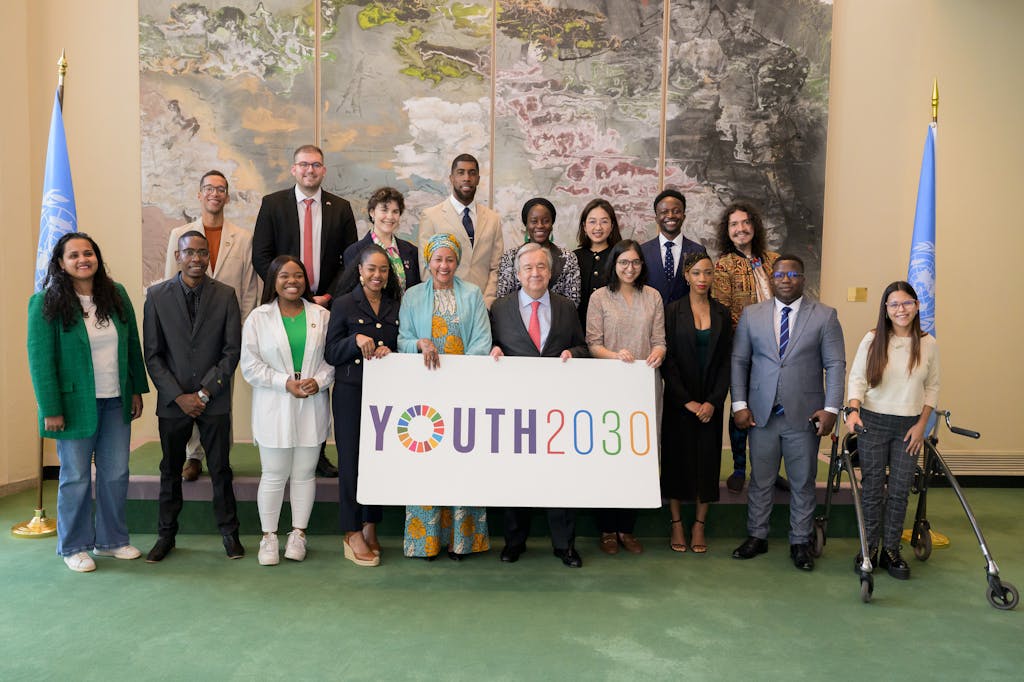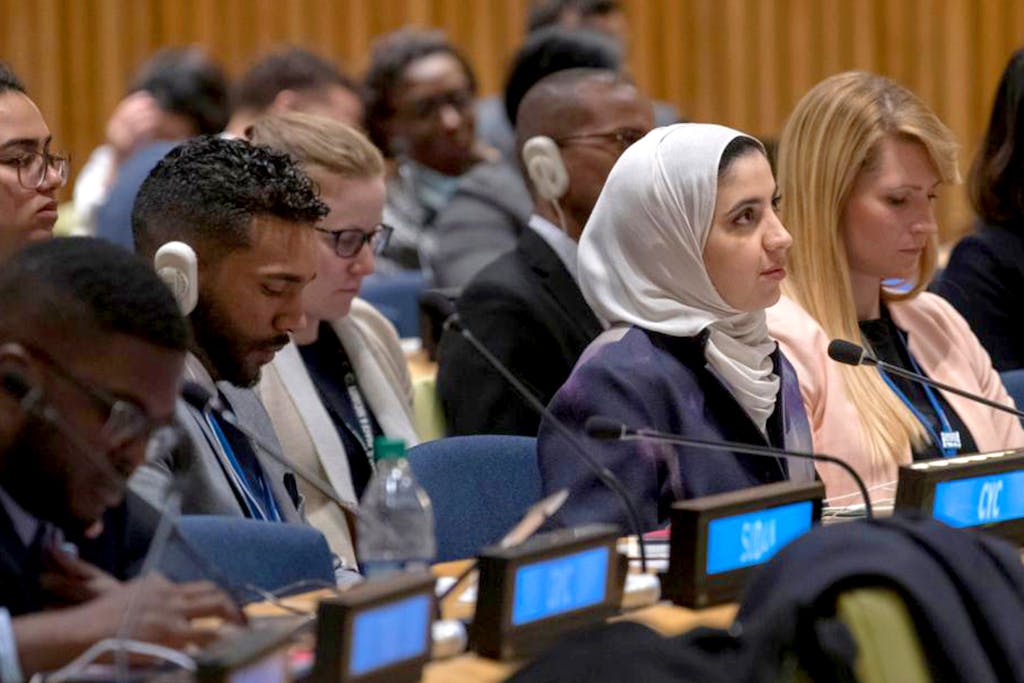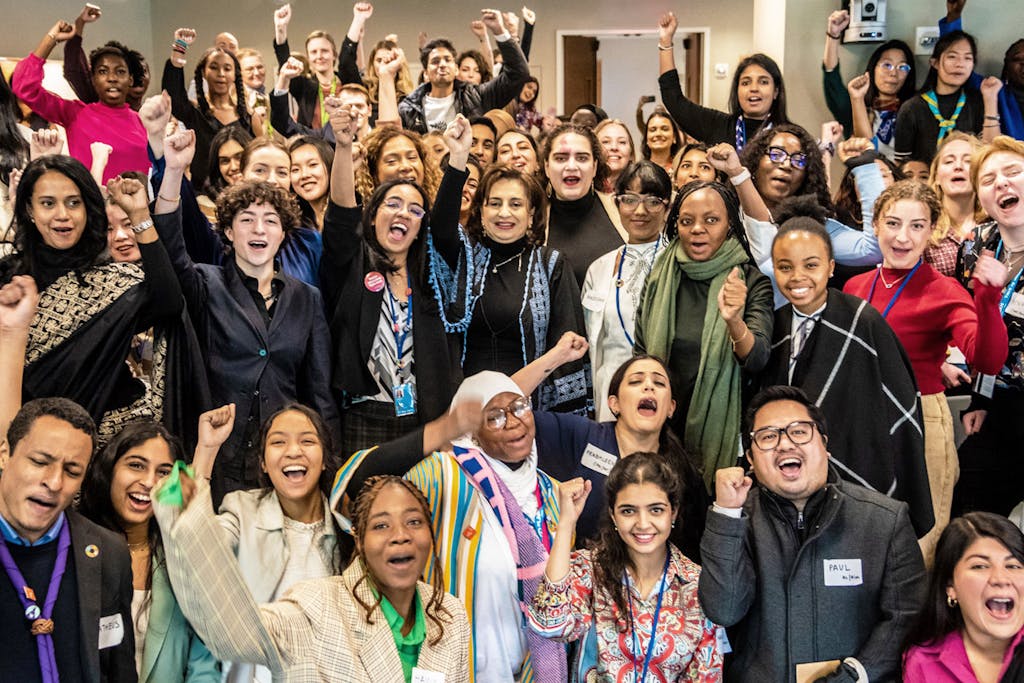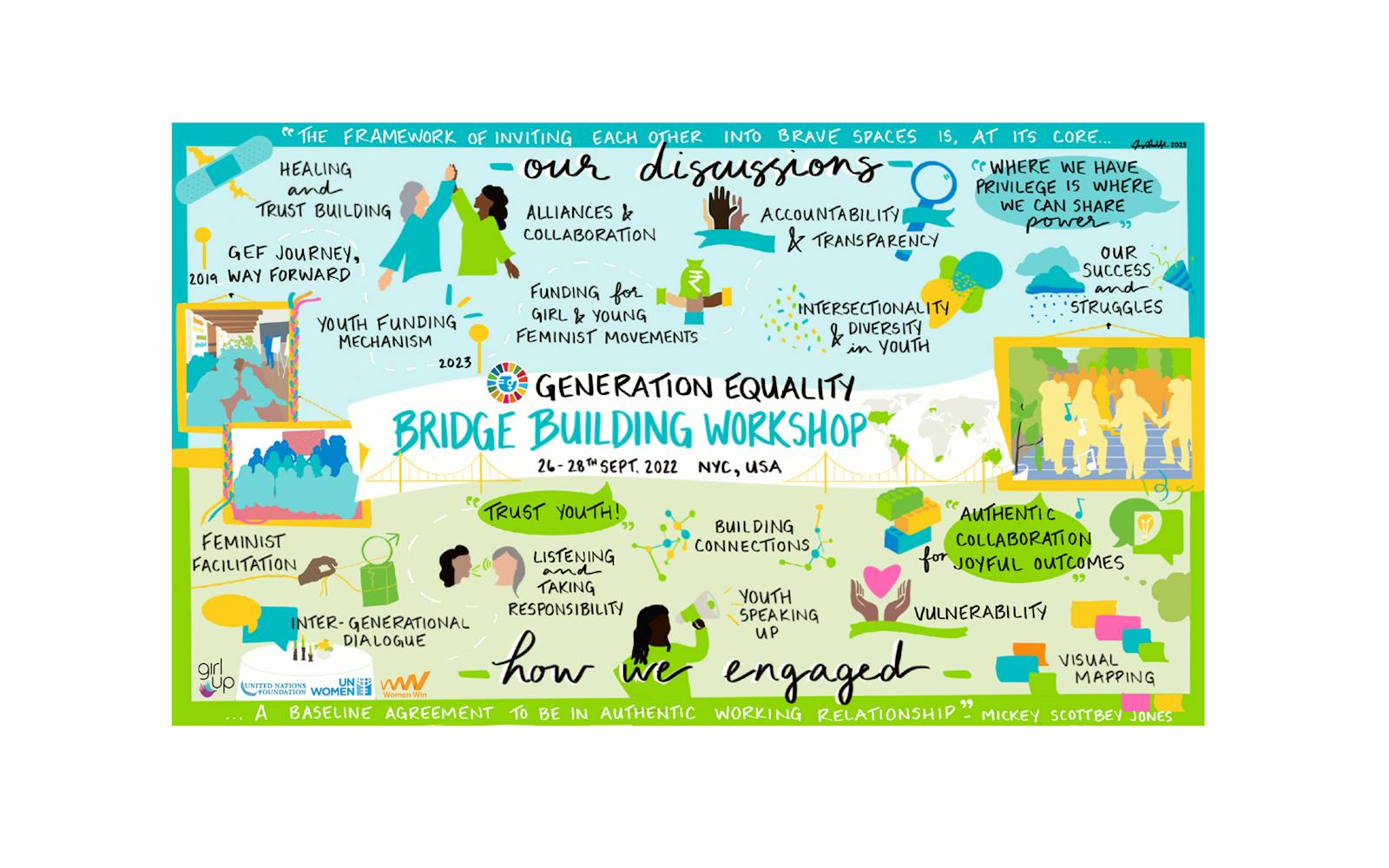Including young people in decision-making spaces is a clear priority for UN Secretary-General António Guterres. But what does meaningful youth engagement look like in practice? Our Girls & Women Strategy team set out to learn how to make youth inclusion more than a buzzword and discovered five lessons along the way.
Since taking office, UN Secretary-General António Guterres has created space within the UN system for young people to lead and to be heard. From appointing the first-ever Envoy on Youth, to calling for the creation of a dedicated Youth Office in the UN Secretariat, to publishing a policy brief on Meaningful Youth Engagement in Policy and Decision-making Processes, the Secretary-General takes youth engagement seriously and isn’t afraid to admit where the UN has fallen short.
In fact, the policy brief includes an honest assessment of the significant shortcomings of the UN’s engagement with youth to date: the tokenization of young people, a lack of inclusivity and diversity, as well as insufficient guidance and training opportunities for young people who want to get involved. But efforts to shift youth engagement away from tokenization and toward more meaningful collaboration and co-ownership should not fall solely on the UN or its Member States. Philanthropies, civil society organizations, the private sector, and every other stakeholder involved in multilateral spaces like the UN have a responsibility to encourage and practice meaningful youth engagement.
In the gender equality movement, the UN Foundation is committed to building bridges between girl and youth advocates and other key stakeholders involved in the Generation Equality process convened by UN Women. To better understand the needs of youth advocates and how best to support them, the UN Foundation’s Girls & Women Strategy team partnered with Girl Up, Women Win, and UN Women to hold a feminist trust-building workshop with 13 adolescent and youth advocates.
Here are five lessons they learned from engaging with youth activists via this “Bridge-Building” workshop about how all stakeholders can ensure that youth engagement is inclusive, meaningful, and more than a buzzword.

In April 2023, UN Secretary-General António Guterres (centre right) and Deputy Secretary-General Amina Mohammed (centre left) meet with Young Leaders for the Sustainable Development Goals. In his brief on meaningful youth engagement, Guterres has called for the establishment of a standing UN Youth Town Hall to create a dedicated space to better prepare young people for participation in UN decision-making mechanisms. Photo: UN/Manuel Elías
1. Recognize and Heal from Past and Ongoing Harm
Whether through exclusion, lack of allyship, or exploitation of their labor, multilateral spaces and processes have harmed many adolescent and youth advocates. And because advocacy can be emotionally, physically, and financially draining, engaging in this work can lead to burnout and can re-traumatize young activists who have had painful experiences during their individual activism journeys. Meaningful collaboration with youth requires acknowledgment and accountability from non-youth stakeholders of past and ongoing harm, and concrete commitments to healing, repairing, and building trust moving forward.
2. Create Space for Joy
To sustain movement-building and keep activists engaged, joy is an essential element. For example, a highlight of the Bridge-Building workshop for many participants was a dance session, where youth and non-youth participants led the rest of the group in dances from their respective cultures. Participants also enjoyed a play-based methodology where they modeled the gender equality ecosystem with Legos, fondly remarking that it “took them back to their childhoods.”
Spaces and moments for joy and rest, whether in dedicated workshops, conferences, or summits, are critical for youth and non-youth stakeholders alike. Recognizing this, the UN Foundation hosted an informal breakfast gathering for the Bridge-Building youth advocates during the 67th Commission on the Status of Women (CSW) and will host a space at the Women Deliver conference in Kigali, Rwanda in July for youth and non-youth advocates to connect, rest, and recharge.

The Third Committee (Social, Humanitarian and Cultural) concludes its debate on social development, with youth delegates asserting that a society that does not consider the perspectives of young people would design faulty policies and visions. Youth leaders require different types of accessibility and support to truly engage in UN and other high-level spaces.
Photo: UN DESA
3. Develop trainings and orientations on how to engage in UN spaces
To foster inclusion, it is critical to avoid jargon and increase accessibility for youth participants, regardless of their prior experience in high-level UN spaces. For example: more advocacy trainings and orientations should be offered specifically for youth prior to key moments such as UNGA, CSW, the ECOSOC Youth Forum, and COPs. These orientations should be held virtually, with time zone and language justice. In addition to providing a space for youth to strategize, orientation calls should provide a clear and honest picture of what to expect at high-level convenings, perhaps by highlighting the experiences of youth advocates who have previously engaged in such spaces.
This recommendation was reinforced by the Secretary-General in his brief on meaningful youth engagement, where he called for the establishment of a standing United Nations Youth Town Hall to create a dedicated space to better prepare young people for participation in UN decision-making mechanisms.
4. Compensate youth and resource youth-led movements
Adolescent and youth advocates have made it resoundingly clear that there is a need for more and better funding for youth activists and youth-led organizations.
For the Bridge-Building workshop, in addition to covering youth participants’ meals, accommodations, travel, and health/visa requirements, the UN Foundation compensated youth for their time and participation via honorariums. Additionally, one major outcome of the workshop was the creation of a pilot, catalytic youth fund of $50,000, which the adolescent and youth participants from the pilot workshop will manage to support a wide range of GEF bridge-building work and activities.
5. Increase Youth Access to High-Level UN Spaces
Resourcing refers not only to financial resources but also to access to resources, such as visa support or help getting access to high-level UN conferences and convenings and other spaces with limited availability.
But accessibility is not just a matter of physical access; a crucial factor to succeed in high-level, multilateral spaces is having a strong network and community of support. The UN and its partners can help expand that network of solidarity and support for young people by offering spaces for youth-only convenings, as well as spaces for young people to build relationships with other members of civil society, funders, governments, the private sector, and other stakeholders.
Support for youth access should be done with intentionality; with commitments to inclusivity, diversity, and intersectionality; and with safeguards to protect young people. Youth leaders are not a monolith, and to truly engage in a space, they require different degrees and types of support based on their gender, economic background, ethnicity, sexual orientation, abilities, or other identities they hold.

There’s momentum toward concretely collaborating and co-designing with youth advocates to enable youth leadership and transform multilateralism. This March, the CSW67 Youth Forum put the spotlight on youth and adolescent recommendations on innovation and technological change, in addition to education in the digital age for achieving gender equality. The process engaged over 2,500 young people across 60 countries. Photo: UN Women/Catianne Tijerina
Looking ahead, the UN Foundation’s Girls and Women Strategy team will apply these lessons learned as they expand the Bridge-Building network through regional workshops in the Global South. Next up: co-hosting a workshop in Kigali, Rwanda, this summer with the original Bridge-Building partners as well as Urgent Action Fund Africa. A second regional workshop will be held in Mexico this fall, and, excitingly, each of these regional youth cohorts will manage its own catalytic fund of $50,000 to put toward activities in support of the Generation Equality Forum agenda.
Overall, one of the main takeaways from the Girls & Women Strategy team’s bridge-building work to date is that meaningful youth engagement is a learning process. Collaboration and co-design with youth advocates should be done with intentionality and empathy, but it must also be done in a way that leaves space for feedback and flexibility. Enabling youth leadership to transform multilateralism requires, first and foremost, listening to youth.
Sparking Meaningful Youth Engagement
Curious to learn more about the UN Foundation’s pilot trust-building workshop for youth advocates in the gender equality space? Check out the summary below for everything you need to know about the first Bridge-Building workshop in the series.






